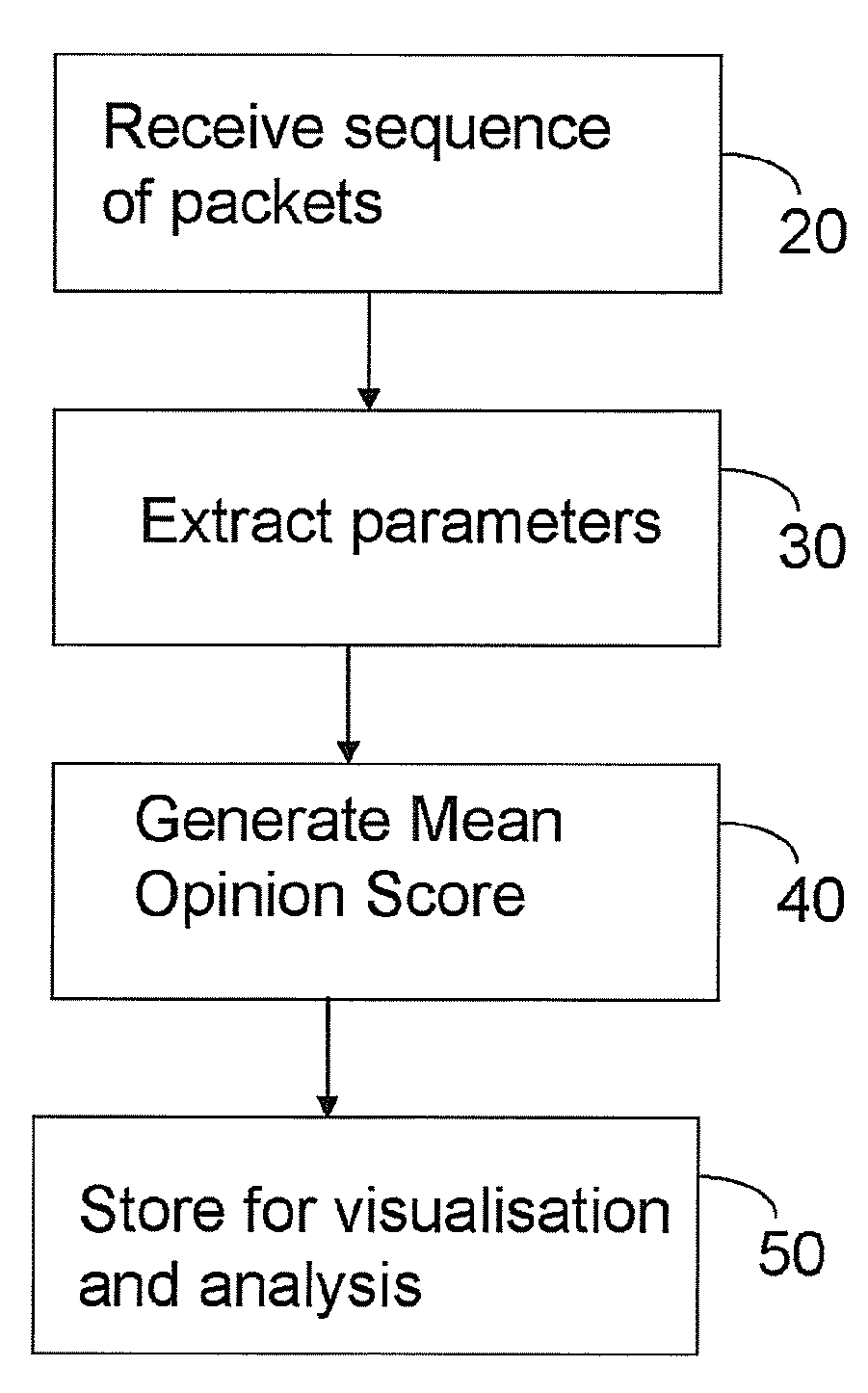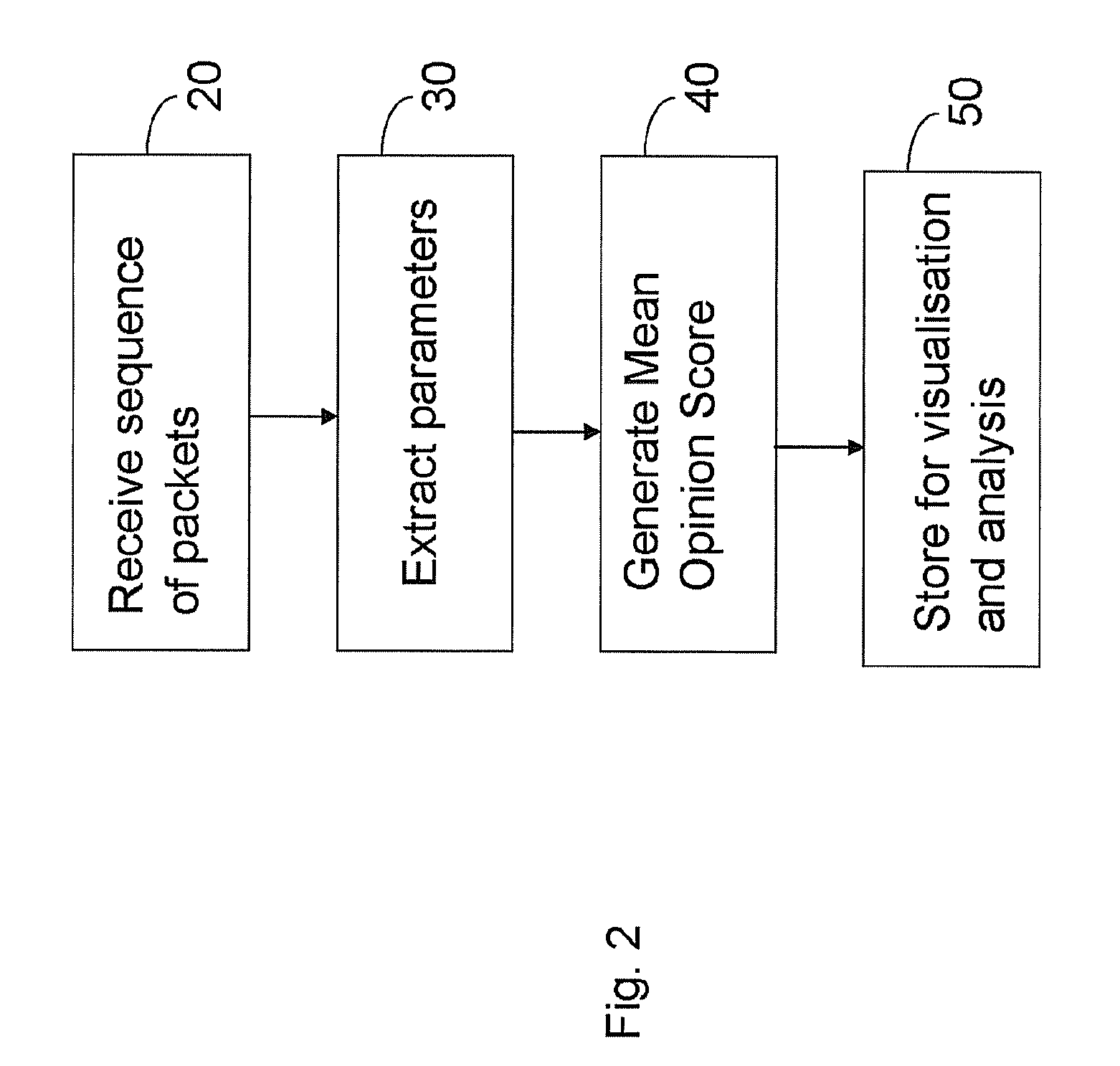Video quality assessment
a video quality and video technology, applied in the field of video quality assessment, can solve the problems of inability to accurately estimate the perceived quality degradation of the video packet payload, the inability to take the effect of packet loss into account, and the more likely to suffer from a loss of packets, etc., to achieve the effect of more impact and quality of decoded video
- Summary
- Abstract
- Description
- Claims
- Application Information
AI Technical Summary
Benefits of technology
Problems solved by technology
Method used
Image
Examples
Embodiment Construction
[0032]Referring now to FIG. 1, encoding using I-frames B-frames and P-frames is illustrated. The advantage of using P and B-frames is that they only encode the difference between the frame to be encoded and another frame, and can therefore be encoded using fewer bits than the equivalent I-frame. However, P and B-frames suffer from a problem called error-propagation whereby an error in one frame will also affect any frames that are based on it. Most recent video coding standards support I, P and B frames, including MPEG-2 part 2, MPEG-4 part 2, MPEG-4 Part 10 (H.264), H.263 and VC-1, with the more recent standards extending the concept of I, P and B encoding to slices of pictures in addition to whole frames.
[0033]The result of such video coding approaches is that successive encoded video frames can vary widely in their size in bytes and their sensitivity to errors. Moreover the bit-rates required to transport video images dictate that each video encoded frame must often be divided in...
PUM
 Login to View More
Login to View More Abstract
Description
Claims
Application Information
 Login to View More
Login to View More - R&D
- Intellectual Property
- Life Sciences
- Materials
- Tech Scout
- Unparalleled Data Quality
- Higher Quality Content
- 60% Fewer Hallucinations
Browse by: Latest US Patents, China's latest patents, Technical Efficacy Thesaurus, Application Domain, Technology Topic, Popular Technical Reports.
© 2025 PatSnap. All rights reserved.Legal|Privacy policy|Modern Slavery Act Transparency Statement|Sitemap|About US| Contact US: help@patsnap.com



